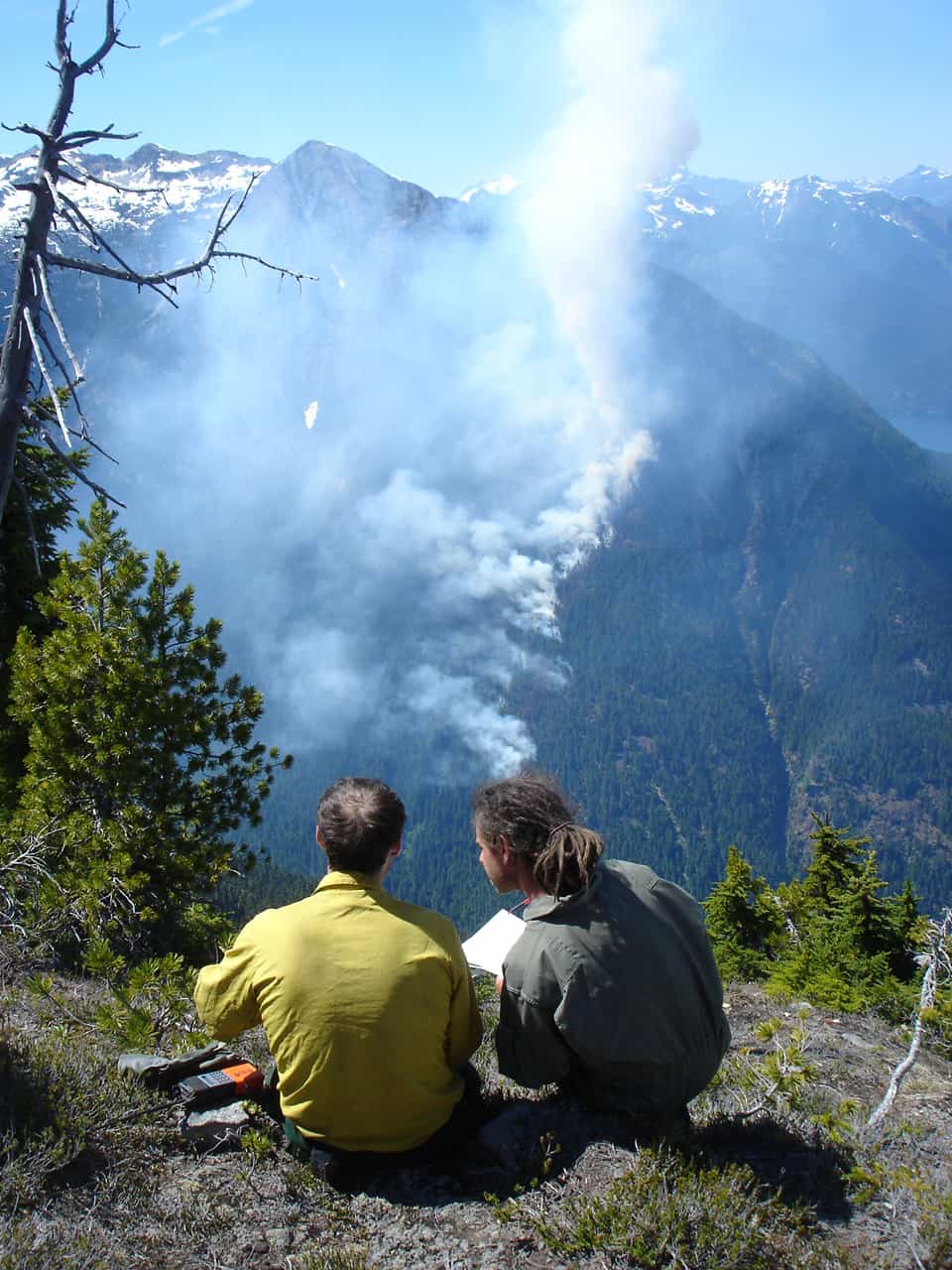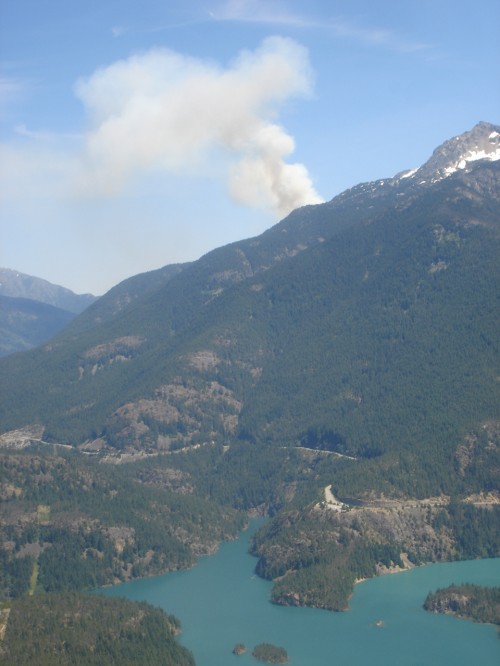Essential Fire: Blaze on Panther Creek

Guest Post by Bob Valen, National Park Service Public Information Officer
Smokey bear is renowned for a few simple 1950s quotes, all of them are asking you and me to “prevent wildfires.” The message is straight-forward, sensible and appropriate in specific situations.
Well, the world of wildland fire management has grown in scientific sophistication. Our understanding of fire and its essential role in ecosystems has increased exponentially. It’s no surprise that some people become confused and frustrated when a wildland fire continues to burn with the blessing of fire managers.
One such fire is the recent Panther Creek Fire. Not large in size, this blaze is currently burning in a fire-adapted ecosystem in Ross Lake National Recreation Area. The Panther Creek fire is a lightning-caused fire burning in a heavily-forested area on steep terrain on the east flank of Ruby Mountain above Panther Creek. Due to steep, dangerous terrain, firefighters are not on the mountain at the wildfire.

View of smoke from Panther Creek Fire above Ross Lake; photo by Kerry Olson
Today, fire is, in some environments and under certain parameters, managed to burn. The natural interactions between fire and the environment influence the vegetation structure and biodiversity within the park and general region. Fire has been a major player in the establishment of the ecosystem. Conversely, the exclusion of fire has documented detrimental impacts on ecosystems. Those impacts can slowly be reversed by resuming the natural regime of fire that will, over time, reduce the risk of catastrophic wildland fires. These high-intensity fires cause undesirable changes in forest type as well as threaten or destroy people and property.
Fire has played a key role in forested landscapes and vegetation in the Pacific Northwest since the end of the last major glaciation period some 12,000 years ago. Analyzed burned areas throughout the Cascades shows similar patterns across the range over the past 600 years with widespread fires occurring from 1400 to 1650, reduced burning from 1650 to 1800, and widespread fires again from 1801 to 1925. This last fire regime was potentially related to European settlement. Finally, fire suppression begins to show its influence by 1950.
The return of fire is like an old, seasoned actor returning to the stage with new vigor, adding depth to the landscape and a greater understanding of the theme — in this case, life and our biosphere.
North Cascades National Park fire managers are watching, flying over and hiking to the base of the Panther Creek fire regularly as they continue to provide management of the situation. Specific actions have been taken, like wrapping the footbridge over Panther Creek with outdated fire shelters because the bridge could be within the fire parameters in weeks to come. Plans are being developed to determine which actions will be taken if the fire reaches certain points.
Visit the National Park Service Wildland Fire webpage to find out more
about the role of fire in ecosystems and how the NPS attempts to manage fire in
natural ecosystems: http://www.nps.gov/fire/fire/fir_wildland.cfm

